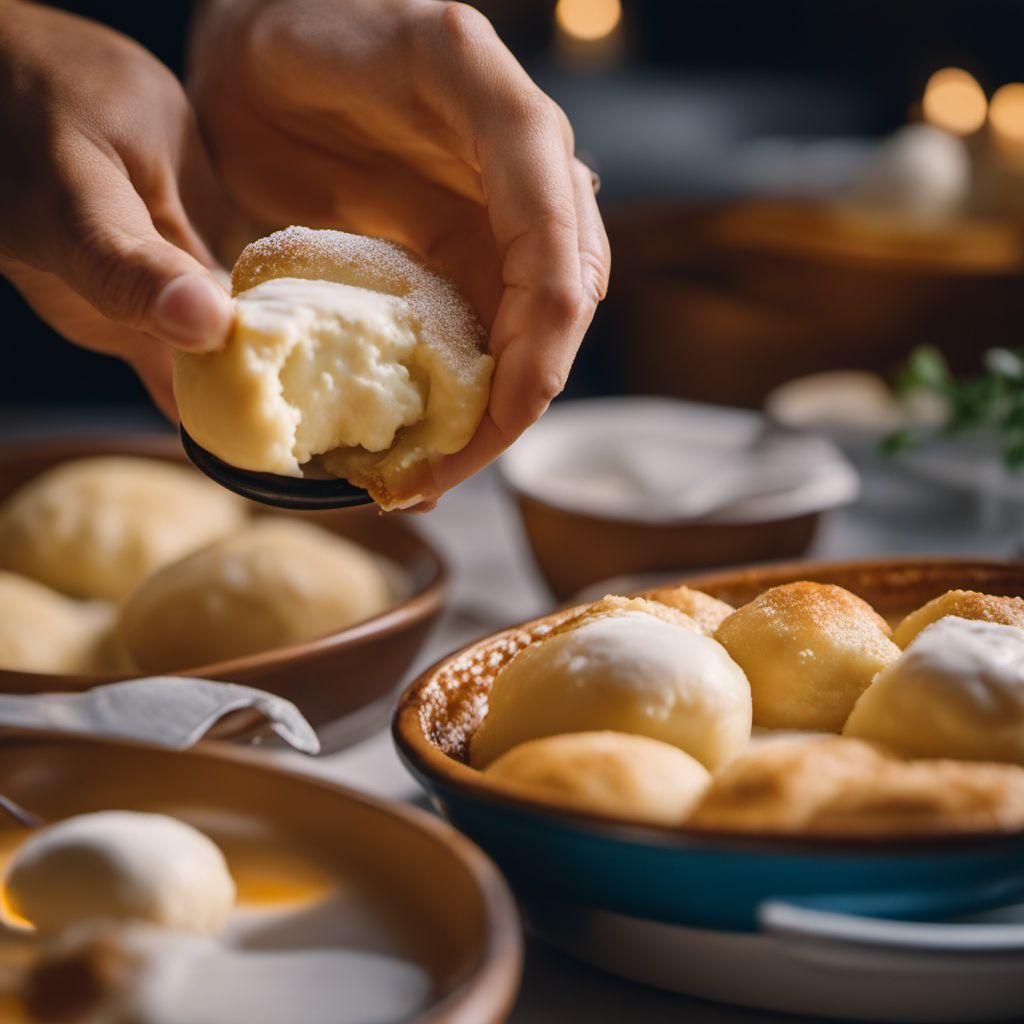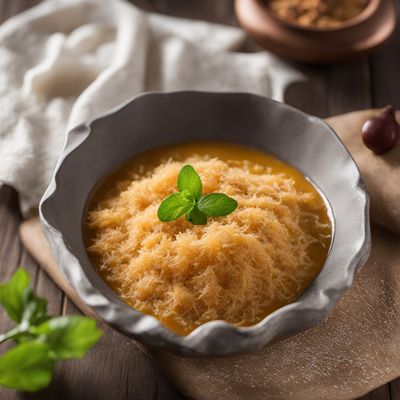
Dish
Túrógombóc
Túrógombóc is a delicious and sweet dessert that is perfect for any occasion. The dough is made from a mixture of flour, eggs, and sugar, and is then rolled out and cut into small circles. The cottage cheese filling is made by mixing together cottage cheese, sugar, and vanilla extract until smooth. The filling is then placed in the center of each circle and the dough is wrapped around it, forming a ball. The dumplings are then boiled in salted water until they are cooked through. Once cooked, they are served with a sweetened sour cream sauce. This dish is a perfect combination of sweet and tangy flavors that is sure to satisfy any sweet tooth.
Origins and history
Túrógombóc has been a traditional Hungarian dish for centuries, with recipes dating back to the 18th century. The dish is typically served during the winter months when fresh fruit is not readily available.
Dietary considerations
Túrógombóc is not suitable for those with gluten or dairy allergies as it contains both flour and cottage cheese. However, it can be made with gluten-free flour and non-dairy cottage cheese substitutes to accommodate these dietary restrictions.
Variations
Variations of this dish can include using different types of cheese such as ricotta or cream cheese instead of cottage cheese. Some recipes also call for the addition of raisins or lemon zest for added flavor.
Presentation and garnishing
Túrógombóc is typically served in a bowl with the sweetened sour cream sauce drizzled on top. It can be garnished with fresh fruit or a sprinkle of powdered sugar for added presentation.
Tips & Tricks
When making the dough, be sure to not overwork it as this can result in tough dumplings. Additionally, be sure to use fresh cottage cheese for the best flavor.
Side-dishes
Túrógombóc can be served with a variety of side dishes such as whipped cream, fresh fruit, or a scoop of vanilla ice cream. It is typically served as a dessert.
Drink pairings
Túrógombóc pairs well with sweet white wines such as Muscat or Tokaji. It can also be enjoyed with a cup of coffee or tea.
Delicious Túrógombóc recipes
More dishes from this category... Browse all »

Afghan mantu
Afghan cuisine

Age gyoza
Japanese cuisine

Ajdovi krapi
Slovenian cuisine

Ajdovi štruklji
Slovenian cuisine

Alivongvong
Lao cuisine

Amadombolo
South African cuisine

Aushak
Afghan cuisine

Ba wan
Taiwanese cuisine
More cuisines from this region...

Austrian cuisine
Hearty, Rich, Flavorful, Sweet

Czech cuisine
Hearty, Savory, Sweet, Tangy

Liechtensteiner cuisine
Hearty, Savory, Tangy, Sweet

Polish cuisine
Savory, Hearty, Rich, Earthy, Tangy

Slovak cuisine
Savory, Hearty, Rich, Earthy, Tangy

Slovenian cuisine
Savory, Hearty, Rich, Earthy, Tangy

Swiss cuisine
Savory, Rich, Creamy, Nutty, Sweet

